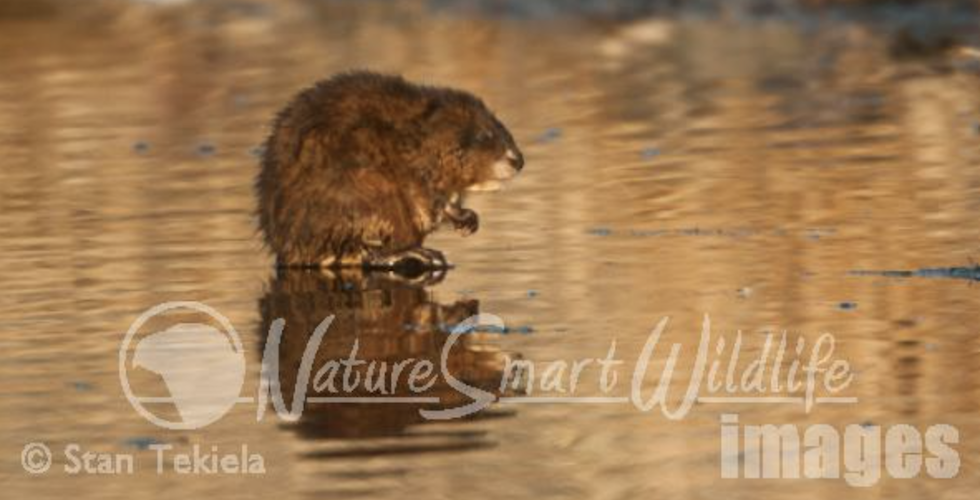
Have You Seen the Incredible Muskrat?
Naturalist and wildlife photographer Stan Tekiela tells us all about the incredible muskrat. Did you know that muskrats are not rats, and that their name is believed to come from the Algonquian Indian language?

This winter has been a bit strange in the northland where I reside—with not much snow but enough cold temperatures to start freezing the lakes. The small lakes and ponds freeze up tight right away, but the larger lakes have open water near the center or in the deeper areas. While out photographing the other day, I noticed something small, round, and brown at the edge of the open water. A muskrat (Ondatra zibethicus) had climbed out of the water and was enjoying the remaining sunlight of the day. I immediately thought how this is a critter that is overlooked in nature.
Despite their name, muskrats are not rats. They are not even in the rat family. Instead, they are more closely related to voles and lemmings. They are medium-size, semiaquatic rodents that are native to North America, but they have been introduced to much of Europe, Russia, Asia, and South America.
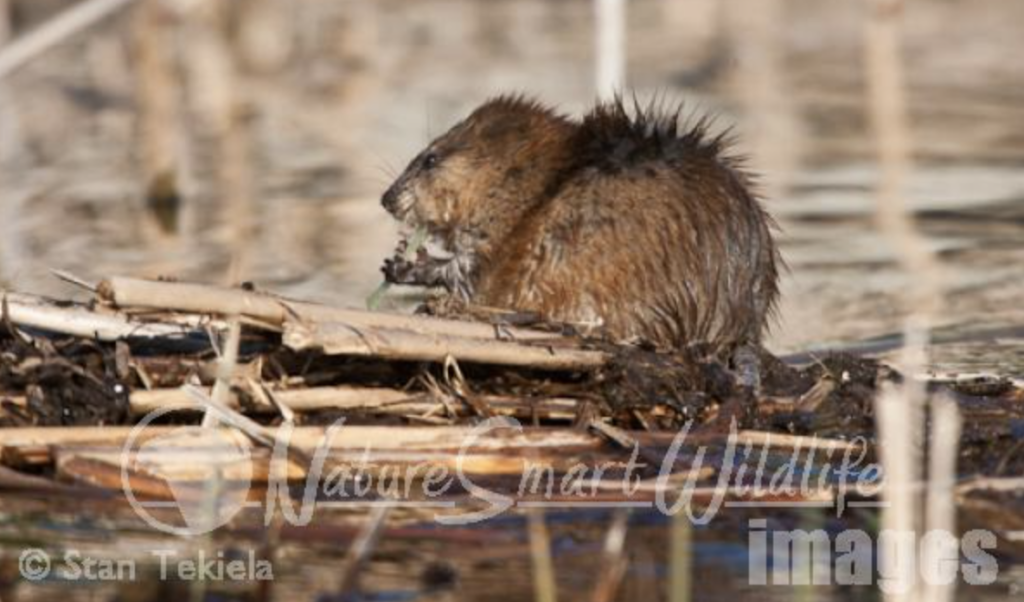
The name muskrat is believed to come from the Algonquian Indian language; “musascus” means “it is red,” which is the color of the muskrat’s fur. The name could also describe the musky smell that the muskrat uses to mark its territory, combined with its naked tail (like a rat).
I find that many people mistake the muskrat with the beaver because they share a similar habitat. However, the muskrat is a fraction of the size of the beaver. The muskrat is only about 16-25 inches in length, with half of that as the tail. Beavers range from 35-49 inches long with their tails making up only about 12 inches. Muskrats weigh 2-4 pounds, while beavers come in between 30 and 70 pounds. That is huge difference.
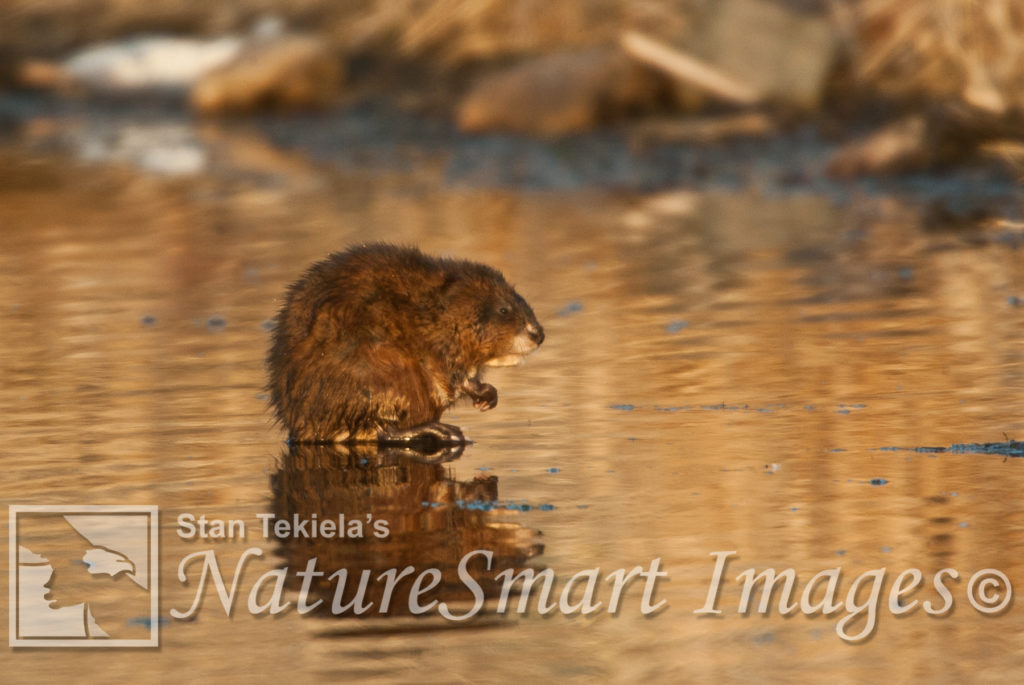
The fur of the muskrat is short, thick, and very soft. The fur has two layers: a short layer provides warmth and waterproofness, and the longer hairs provide the shape, color, and protection from physical objects in the environment. The fur is why muskrats can swim in nearly freezing cold water or stand around on the ice in winter and not be cold. They spend a lot of time grooming and taking care of their fur.
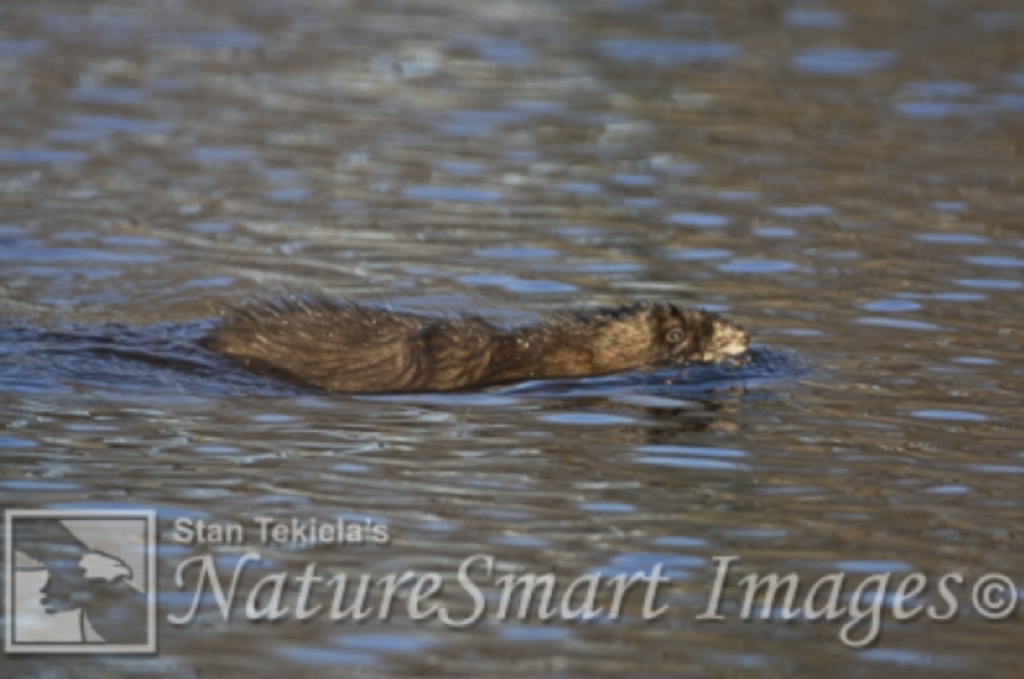
Muskrats spend a lot of time in the water. They are well adapted for an aquatic lifestyle. Their hind feet are partly webbed, and the toes have a fringe of stiff hairs, all of which helps them when swimming. Their tail is naked, like most of the animals in the vole family, but the muskrat’s tail is flatted on both sides (laterally compressed). No other animal in North America has this trait. It is believed the tail shape helps propel them when swimming.
These cool critters are active any time of the day or night. They live in small- to medium-size groups, which are broken down into family units with one male and one female and their young. They feed mostly on aquatic vegetation, typically the lower quarter of a plant. About 95% of their diet is made up of plants. But they also eat small animals such as crayfish, snails, frogs, and fish.
The preferred habitat of the muskrat includes shallow lakes and ponds where the water is no more than 4 feet deep. They make homes, called lodges, from aquatic vegetation. It is easy to tell the difference between a beaver lodge and a muskrat lodge. The beaver lodge is constructed of woody vegetation, such as sticks and branches from trees. The muskrat lodge is constructed of green or herbaceous plants such as cattails and bullrush.
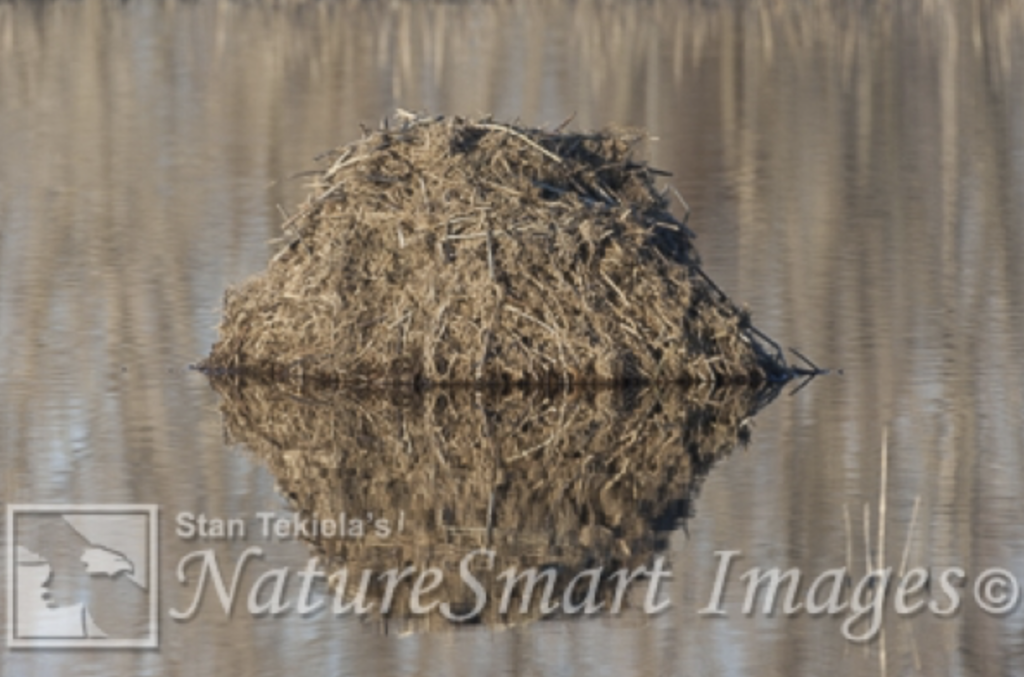
The muskrat lodge stands above the water but has an underwater entrance. The walls can be upwards of 2 feet thick and provide a warm and safe interior environment. Studies show that, during winter, the interior of the lodge can be upwards of 30 degrees warmer than the outside air temperatures.
Muskrats don’t hibernate during winter. They remain active under the ice and inside their lodge. Unlike beavers, they don’t store food for winter. They continue to feed upon aquatic vegetation, sometimes eating the walls of their lodge. They make narrow channels through the cattail marsh, which they use during winter when all the water is frozen.
So, this winter, keep an eye out for a small, round furball sitting on the edge of the open water. You just might see the incredible muskrat.
If you enjoyed Stan’s post, you may consider his amazing nature books: Majestic Eagles, Wild Birds, or Backyard Birds: Welcomed Guests at our Gardens and Feeders.
You can follow Stan on Facebook and Twitter, or contact him via his web page. Stan’s nationally syndicated NatureSmart Column appears in more than 25 cities spanning 5 states (Minnesota, Wisconsin, Michigan, Illinois, and Pennsylvania) and is circulated to more than 750,000 readers.
For more about wildlife and nature, sign up for our newsletter now!


